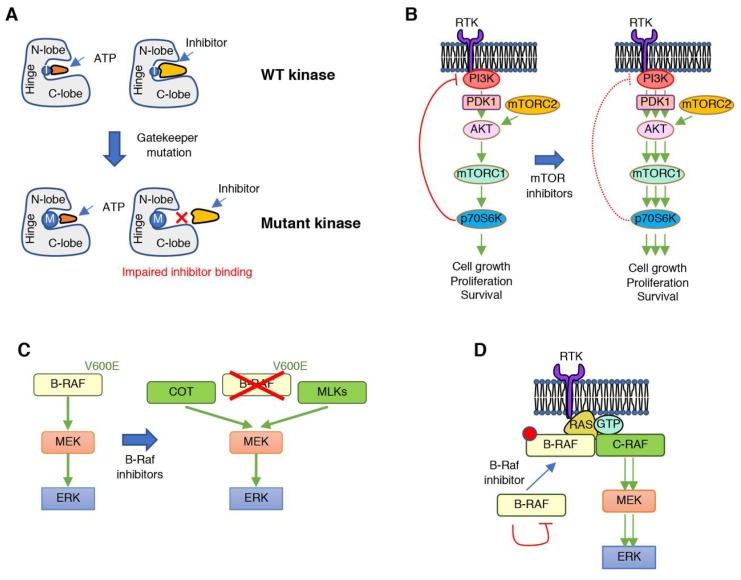Figure 2.
Mechanisms of tumor resistance to protein kinase inhibitors. (A) Mutations in the hinge region of protein kinases, such as in the gatekeeper residue (exemplified by T on the wild-type (WT) kinase) into bulkier amino acids can impair binding of small molecules due to steric restrictions. (B) The relief of negative regulatory signals, such as when treating with mTOR inhibitors, can lead to undesired reactivation of the inhibited pathway or of compensatory signaling cascades. (C) Resistance to B-RAF inhibitors is frequently achieved through increased expression of protein kinases that can phosphorylate MEK and compensate for B-RAF inhibition. (D) Treatment with B-RAF inhibitors can lead to paradoxical reactivation of the RAF–MEK–ERK signaling cascade by promoting B-RAF and C-RAF dimerization, as well as interaction of the RAF dimer with active RAS.

